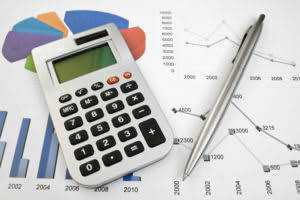
To calculate product cost, determine the materials needed to produce it. Research suppliers and compare prices to get the best deal on each item. Once you’ve arrived at an optimal budget for materials, add the labor cost to the total. This includes wages for employees or contracted workers involved in making the product.

Forensic Accounting: Definition, History & Methods
Sometimes, they may be trying to attract customers by offering lower prices. After the total product cost is calculated, a markup is added to determine the selling price of the product. This can include wages, benefits, and any other expenses related to the employees who have the product. For example, if a carpenter makes the chair, the direct labor cost would include their wages and benefits.
What are the components of Product Costs in Managerial Accounting?

One major https://www.bookstime.com/articles/church-chart-of-accounts issue in all of these contracts is adding too much overhead cost and fraudulent invoicing for unused materials or unperformed work by subcontractors. Management might be tempted to direct the accountant to avoid the appearance of going over the original estimate by manipulating job order costing. It is the accountant’s job to ensure that the amounts recorded in the accounting system fairly represent the economic activity of the company, and the fair and proper allocation of costs. Do you know of a restaurant that was doing really well until it moved into a larger space?

Understanding Production Costs
Accountants treat all selling and administrative expenses as period costs for external financial reporting. Direct costs for manufacturing an automobile, for example, would be materials like plastic and metal, as well as workers’ salaries. Indirect costs would include overhead such as rent and utility expenses. Total product costs can be determined by adding together the total direct materials https://www.facebook.com/BooksTimeInc/ and labor costs as well as the total manufacturing overhead costs. To determine the product cost per unit of product, divide this sum by the number of units manufactured in the period covered by those costs.
- These fringe benefit costs can significantly increase the direct labor hourly wage rate.
- Any of these types of companies may just use the term overhead rather than specifying it as manufacturing overhead, service overhead, or construction overhead.
- First, you have to decide which costs you will treat as direct and indirect costs.
- This treatment differs from period costs, including fixed, underselling, and administrative expenses.
- On the other hand, if production costs decrease due to increased efficiency or automation, then this could lead to lower product costs.
Product Costing in 7 Easy Steps

This post will explain why manufacturing managers should worry about product overcosting or undercosting. Understanding product cost is critical for deciding which products to produce and sell and allocating resources such as time, labor, and materials. A company must make sure it is charging enough to cover its costs and make a profit. If a company sets its prices too low, it cannot cover its costs and may go out of business.
These costs include the costs of direct materials, direct labor, and manufacturing overhead. They will not be expensed until the finished good are sold and appear on the income product costs consist of statement as cost of goods sold. Period costs are closely related to periods of time rather than units of products. For this reason, businesses expense period costs in the period in which they are incurred.
Price your products in line with the market:
This method is useful when a company wants to identify areas of inefficiency and reduce costs. That’s why product costing is a vital component of any thriving business. This article delves into the intricacies of product costing to help you gain a deeper understanding of its importance. The marginal cost of production refers to the total cost to produce one additional unit.
